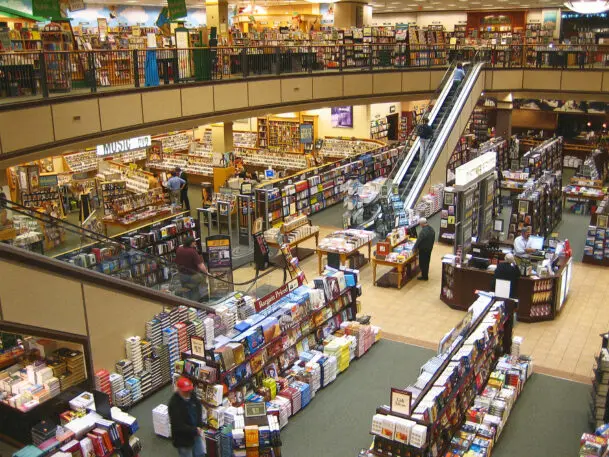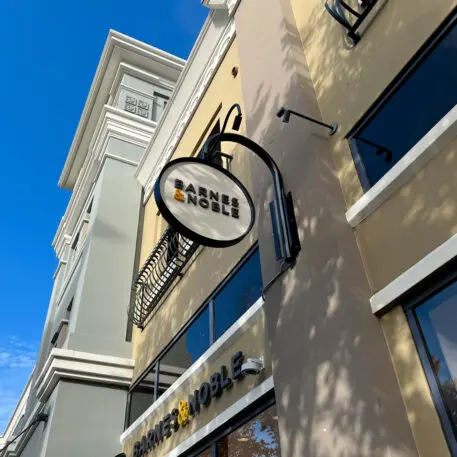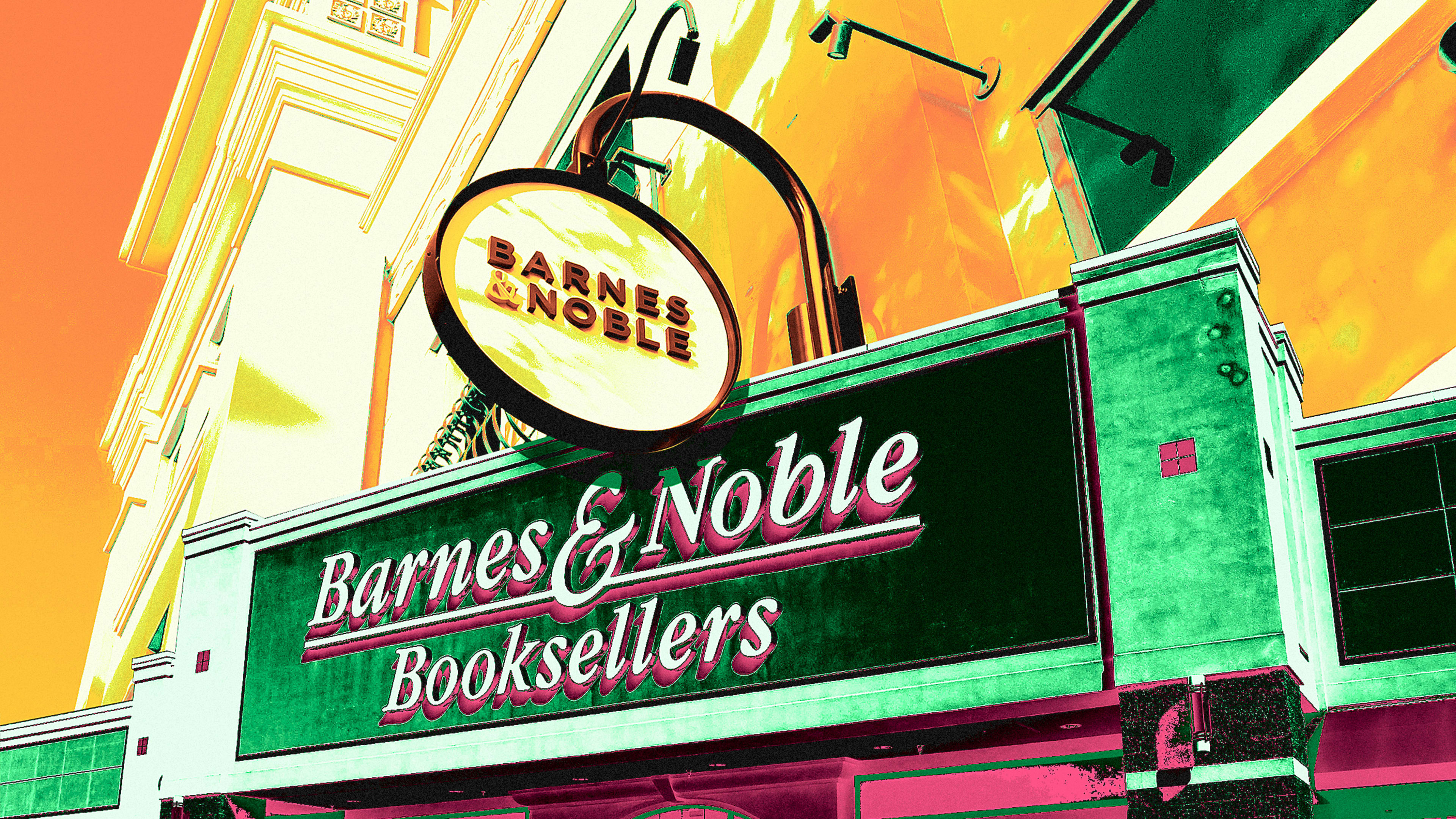Branded is a weekly column devoted to the intersection of marketing, business, design, and culture.
Barnes & Noble ended 2022 with some surprising news: After more than a decade of shuttering locations, the chain plans to debut 30 new stores this year. “We’ve now got both the profitability and the confidence to start opening up stores again,” CEO James Daunt told The Wall Street Journal. And it’s hard to deny that the brand is enjoying its most flattering moment in the spotlight in ages. Somehow, one of the great cultural villains of the big-box retail heyday is now an underdog hero, making a welcome comeback as a symbol of the true love of books.
This definitely represents a new chapter for the chain. While it traces its roots to a late-19th century New York shop, Barnes & Noble went on to become synonymous with profit-centric and homogenous megastore culture that bullied mom-and-pop booksellers out of business. Famously, it was the obvious model for Fox Books, the rapacious chain in the 1998 romcom You’ve Got Mail. At its apex, around 2008, it had about 725 locations. “Barnes & Noble was perceived as not just the enemy,” a former chief executive of the American Booksellers Association, which represents indie shops, told the New York Times, “but as being everything about corporate book selling that was wrong.”

The plot twist, of course, was the steady transformation of Amazon into an unprecedented retail machine that undermined not just mom-and-pop bookshops, but Barnes & Noble, and ultimately the entire big-box ecosystem. Since that 2008 peak, Barnes & Noble has closed 150 locations, repeatedly shuffled its management and strategy, and was seen as potentially vulnerable to collapse when it sold to a hedge fund for $628 million in 2019. (Amazon’s market cap now hovers around $970 billion.) Barnes & Noble, the former giant, had been recast as a sad sack with a dubious future.
The chain’s new owners, Elliott Advisors, sought to turn the page by bringing in Daunt, the chief executive of U.K. book chain Waterstone (also owned by Elliott). Daunt, credited with pulling Waterstone back from bankruptcy’s brink, basically said he would use the same playbook, most notably giving more autonomy to individual stores to function more like local shops than cookie-cutter manifestations of a top-down corporate vision. The strategy, he said at the time, boiled down to “running really nice bookshops.”
And this, at least by some accounts, is exactly what Daunt has done, and exactly why Barnes & Noble is now a book-culture hero. The most full-throated endorsement yet came from Ted Goia, author of the popular culture newsletter “The Honest Broker:” “This is James Daunt’s super power,” Goia declared. “He loves books.”
Some other subplots have helped shape Barnes & Noble’s transformation. Daunt took over not long before the pandemic lockdowns kicked in, which obviously created profound challenges—but also opportunities. Autonomy notwithstanding, Daunt moved the entire chain away from its years of dabbling in a more gift-y and impulse-buy non-book product mix: more books, no more batteries. And it nixed deals with publishers to feature certain titles in exchange for a fee. The company also used the lockdown period to improve and update store designs. Daunt has been blunt about this, calling the stores “boring,” “a bit ugly,” and full of “irrelevant” products.
More generally, the broader fortunes of the physical book business aren’t quite so grim as they seemed a few years ago. For starters, the idea that e-books would obliterate print (and thus bookstores in general) fizzled. An estimated three-quarters of publisher sales revenue still comes from physical books. And the pandemic era was relatively good for books. Print sales reportedly rose 8% in 2020, one of the biggest spikes in decades, and rose again in 2021; that softened last year, but sales remain above 2019 levels.

And physical retail has been a factor: “In the last couple of years, more than 300 new bookstores have opened up across the country, and a lot of younger, more diverse owners are coming into the business,” NYT publishing reporter Alexandra Alter recently told On The Media. “And that’s a very exciting and enriching thing that is pretty new and was a side effect in some odd way of the pandemic.”
Finally, while lockdowns obviously caused havoc for physical retail, they also arguably fostered a new appreciation for it—something like nostalgia for the wandering of aisles, even in big-box stores. The Journal flagged Barnes & Noble as part of a “big-box retail revival,” including new openings from Burlington, Ross, and others.
That said, it’s worth acknowledging that while Barnes & Noble is adding some locations, it is still closing others, and seems to be shifting to smaller footprints. (A new 7,000-square-foot store is opening on the Upper East Side of Manhattan—near a shuttered location that was 50,000 square feet.)
But Goia is surely correct that Barnes & Noble’s redoubled focus on, you know, books, has been crucial to its nascent potential turnaround. And it’s hard to resist his “simple lesson” that love is the key to culture businesses: “Creative fields like music and writing live and die based on creativity, not financial statements and branding deals.”
There may be counter arguments to that (financial statements are important), and there may be more to the story than love of books. But what’s remarkable is that the case study for book love is now . . . Barnes & Noble! Has a brand’s image ever had so many twists and turns? There could be more to come, but maybe we should just let Barnes & Noble enjoy the momen—after all, everybody loves a good underdog story.
Recognize your brand’s excellence by applying to this year’s Brands That Matter Awards before the early-rate deadline, May 3.
